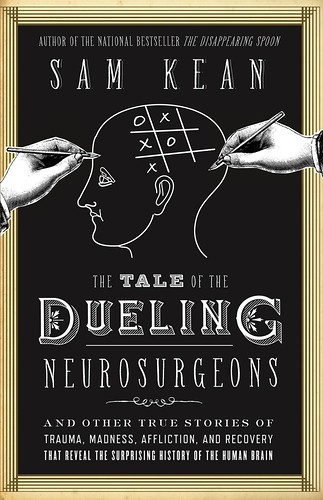

That’s important as Kean is often telling the reader about the opposing theories of the day-as the title suggests. On the other hand, while Kean is dealing in the historic, he brings in modern science on occasion to give the reader insight into what ideas have been confirmed and which overturned. Kean delves into the intriguing details of such cases. While some of those books mention the same (or similar) cases as Kean, they do so to illustrate the Dark Age origins of many of these questions.

Kean’s book is complementary to the body of works on popular neuroscience. (You should read Ramachandran’s book “ The Tell Tale Brain” also.)


Ramachandran, which largely deal in discoveries rooted in low-tech but exceedingly clever science, are placed in the context of present-day science. synesthesia, phantom limbs, epilepsy’s effect on beliefs, and the brain’s role in aberrant behavior) most of them are rooted in the mother-lode of discoveries that have come out of functional Magnetic Resonance Imaging (fMRI) and other modern technologies. (You’ll note that I’ve reviewed many of them.) While other books discuss many of the same intriguing neuroscientific phenomena (e.g. There have been a massive number of popular science books on the brain in recent years. It’s this historical approach that builds a niche for Kean. Phineas Gage, one of the most well-known cases in the book, a construction foreman who had a steel tamping rod rocketed through his skull.) We learn about the damaged brains of kings, assassins, soldiers, adventurers, and those with more mundane jobs but no less fascinating brain trauma (e.g. Kean’s book is in part a history and in part a work of popular science, and the cases selected are often of interest both as history and as science. From the rudimentary observation that people conked on the head often pass out temporarily, doctors began to learn about the degree to which brain parts were specialized and how changes in the brain effected beliefs, memories, and behavior. Still, over time, a few conscientious doctors and scientists pieced together important clues. Looking at damaged brains is obvious not the ideal way to study the most complex system in the known universe-accidents and brain-eating diseases aren’t discriminating. Kean’s book examines the evolution of our understanding of the brain by way of investigations of historic cases. Once upon a time, our knowledge of what the brain did, how it worked, and the degree to which its parts were specialized came from observing people who had brain injuries or a disease of the brain. The Tale of the Dueling Neurosurgeons: The History of the Human Brain as Revealed by True Stories of Trauma, Madness, and Recovery by Sam Kean


 0 kommentar(er)
0 kommentar(er)
